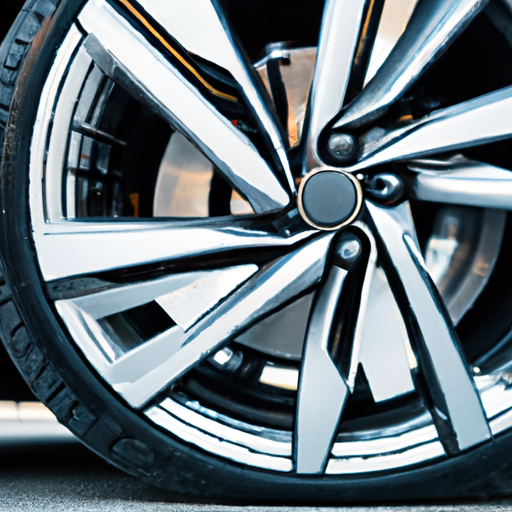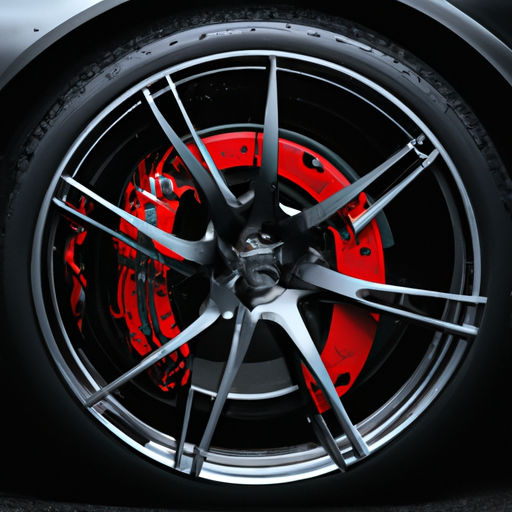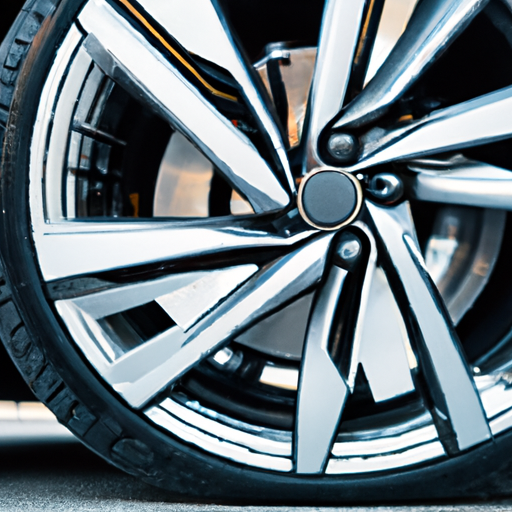Have you ever wondered if there are wheel designs specifically optimized for aerodynamics? Whether you’re a cycling enthusiast or just curious about the science behind it, this article explores the fascinating concept of aerodynamic wheel designs. From reducing drag to improving efficiency, we’ll delve into the world of wheel design and how it can enhance your riding experience. Whether you’re cruising on a bike or speeding down the racetrack, understanding the role of aerodynamics in wheel design will have you looking at your wheels in a whole new light.
Overview
When it comes to cycling, the performance of your bike can be greatly influenced by its aerodynamic efficiency. One key component that plays a significant role in improving aerodynamic performance is the wheel. The design of the wheel can reduce drag, increase stability in crosswinds, and optimize overall efficiency. In this article, we will explore the various factors affecting aerodynamic performance and delve into the details of wheel size, shape, spoke design, rim depth, and rim width. We will also discuss real-world case studies of aerodynamic wheel designs and the importance of testing and wind tunnel studies. By the end, you will have a comprehensive understanding of how different wheel designs can impact your cycling performance and be able to make informed decisions about which wheels are best suited for your riding style and conditions.
Factors Affecting Aerodynamic Performance
Before we dive into the specific details of wheel design, it is crucial to understand the fundamental factors that affect aerodynamic performance. These factors include wheel size, wheel shape, spoke design, rim depth, and rim width. Each of these elements contributes to the overall aerodynamic efficiency of the wheel, and understanding their individual impacts will help us grasp the bigger picture.

Wheel Size
Effect on Drag
The size of your wheels directly affects the amount of drag experienced while cycling. In general, larger wheels create less drag compared to smaller wheels. This is because larger wheels have a larger contact patch with the ground, resulting in a smoother flow of air around the wheel. The reduced drag experienced with larger wheels can lead to improved speed and efficiency, making them ideal for riders looking to optimize their aerodynamics.
Effect on Crosswind Stability
While larger wheels offer improved aerodynamic performance, they can also be more susceptible to crosswinds. The increased surface area of larger wheels can catch the wind, causing instability and potentially compromising your control over the bike. Alternatively, smaller wheels offer better crosswind stability, as they present a smaller profile for the wind to act upon. Therefore, it is essential to find a balance between aerodynamic efficiency and crosswind stability when choosing the right wheel size for your cycling needs.
Recommended Sizes for Different Applications
The selection of the most suitable wheel size depends on the type of cycling you plan to undertake. For road racing and time trials, larger wheels, such as 700c, are commonly used due to their aerodynamic advantages. On the other hand, smaller wheels, like 650c, may be preferred for criterium racing or hilly terrains where crosswind stability is crucial. It is important to consider the demands of your riding discipline and choose the wheel size that aligns with your specific requirements.
Wheel Shape
Airfoil Profiles
The shape of the wheel plays a critical role in its aerodynamic efficiency. Many modern wheel designs incorporate airfoil profiles, which are modeled after the wings of airplanes. Airfoil profiles feature a streamlined shape that allows air to flow smoothly around the wheel, reducing drag. These profiles are typically rounded on one side and flat or slightly convex on the other, creating a pressure differential that helps generate lift, similar to the way an airplane wing generates lift. By utilizing airfoil profiles, wheel manufacturers strive to optimize both aerodynamics and stability.
Dimples and Tubercles
In addition to airfoil profiles, some wheel designs incorporate dimples and tubercles on the surface. Dimples are small indentations, while tubercles are small protrusions. These features disrupt the airflow, creating a turbulent boundary layer that reduces drag. Studies have shown that dimples and tubercles can significantly improve the aerodynamic performance of a wheel. By implementing these design elements, wheel manufacturers can further enhance the efficiency and speed capabilities of their products.
Blunt vs. Pointed Leading Edges
The leading edge of a wheel refers to the part that cuts through the air first. There is an ongoing debate regarding the benefits of blunt versus pointed leading edges. Blunt leading edges create a larger wake behind the wheel, resulting in increased drag. However, they also provide better crosswind stability. On the other hand, pointed leading edges create a smaller wake and reduced drag but can be more susceptible to crosswinds. The choice between the two depends on the rider’s priorities regarding drag reduction and crosswind stability.

Spoke Design
Solid Disc Wheels
Solid disc wheels, as the name suggests, do not have any spokes. These wheels offer the least amount of air resistance, making them exceptionally aerodynamic. Solid disc wheels are often used in disciplines like time trials and triathlons, where maximizing speed is crucial. However, it is important to note that solid disc wheels can be affected by crosswinds due to their large surface area, potentially compromising stability.
Bladed/Flat Spokes
Bladed or flat spokes are designed to minimize air resistance while providing the necessary structural support. These spokes feature a narrow, elliptical shape that reduces drag compared to traditional round spokes. By minimizing air resistance, bladed or flat spokes contribute to improved aerodynamic performance, making them a popular choice among cyclists looking to optimize their speed and efficiency.
Number of Spokes
The number of spokes on a wheel can impact both aerodynamics and overall weight. Generally, wheels with fewer spokes experience reduced drag due to the decreased surface area exposed to the wind. However, fewer spokes may also result in reduced lateral stiffness, compromising the wheel’s ability to handle high forces during cycling. It is important to consider the intended riding conditions and terrain when deciding on the ideal number of spokes for your wheels.
Rim Depth
Effect on Aerodynamics
Rim depth refers to the height of the wheel’s rim. The depth of the rim directly affects the aerodynamic performance of the wheel. Deeper rims, typically seen in aerodynamic wheels, offer enhanced aerodynamics by reducing turbulence and drag. The smooth, streamlined shape of deeper rims allows air to flow more efficiently around the wheel, resulting in increased speed. However, it is crucial to consider the trade-off between aerodynamics and other factors such as crosswind stability, weight, and maneuverability.
Trade-Off with Side Wind Stability
Deeper rims, while offering improved aerodynamics, can be more susceptible to side winds. The increased surface area and profile of deeper rims can catch the wind, causing the bike to feel less stable in crosswind conditions. This trade-off between aerodynamic advantage and crosswind stability needs to be carefully considered when choosing the rim depth for your wheels.
Optimal Rim Depth for Different Riding Conditions
The optimal rim depth depends on your specific riding conditions and objectives. For flat, windless time trial courses, deeper rims offer a significant advantage in terms of aerodynamics and speed. However, for hilly or mountainous terrains or areas prone to intense crosswinds, shallower rims may be more suitable to maintain stability and control. It is important to assess the average conditions you encounter during your rides and choose a rim depth that aligns with your riding style and goals.

Rim Width
Effect on Rolling Resistance
Rim width plays a crucial role in the overall rolling resistance of the wheel. Wider rims offer improved rolling resistance by providing better support to the tire, allowing it to maintain its shape and reduce deformation. This enhancement in rolling resistance can result in increased speed and efficiency. However, it is essential to consider the compatibility between the rim width and the tire width to ensure optimal performance and safety.
Tire Width Compatibility
The width of the tire should be compatible with the rim width to ensure proper tire fit and performance. A narrower rim paired with a wider tire can lead to decreased aerodynamic performance and potentially jeopardize safety. Conversely, a wider rim with a narrower tire can compromise stability and may cause the tire to handle unpredictably. It is crucial to consult the manufacturer’s guidelines and recommendations to ensure the appropriate match between rim width and tire width.
Balancing Aerodynamics and Comfort
While wider rims offer improved rolling resistance and aerodynamics, they can also affect the overall comfort of your ride. Wider rims tend to have a greater volume of air inside the tire, resulting in a smoother and more comfortable ride. Conversely, narrower rims may offer a harsher ride due to less air volume and decreased shock absorption. When choosing the rim width, it is essential to strike a balance between aerodynamics and comfort, taking into consideration the terrain you typically ride on and your personal preferences.
Case Studies of Aerodynamic Wheel Designs
Zipp 454 NSW
The Zipp 454 NSW is a renowned aerodynamic wheelset known for its cutting-edge design and exceptional performance. The wheel features an undulating rim shape, referred to as “Sawtooth,” which was meticulously engineered to minimize drag and enhance stability. The unique dimples on the rim surface reduce turbulence and improve the wheel’s aerodynamic efficiency. The Zipp 454 NSW combines these key design elements to deliver remarkable speed and control, making it a popular choice among competitive cyclists.
ENVE SES 7.8
The ENVE SES 7.8 is another highly regarded aerodynamic wheelset designed to optimize speed and stability. With a rim depth of 71mm at the front and 78mm at the rear, these wheels excel in flat and windless conditions, such as time trials and triathlons. The rim shape of the ENVE SES 7.8 is specifically engineered to reduce drag, providing a noticeable improvement in aerodynamic performance. Cyclists who prioritize speed and efficiency often choose the ENVE SES 7.8 for its exceptional aerodynamic qualities.
Hunt 50 Carbon Aero Disc Wheelset
The Hunt 50 Carbon Aero Disc Wheelset is a versatile wheelset that combines aerodynamics with the added benefit of disc brakes. With a rim depth of 50mm, these wheels strike a balance between aerodynamic advantage and crosswind stability. The rim shape features an optimized airfoil profile, enhancing the efficiency and speed of the wheel. The integration of disc brakes provides reliable stopping power and consistent performance in various weather conditions, making the Hunt 50 Carbon Aero Disc Wheelset a popular choice for all-around cycling pursuits.

Real-World Testing and Wind Tunnel Studies
Comparing Aerodynamic Wheel Designs
To evaluate and compare the aerodynamic performance of different wheel designs, real-world testing and wind tunnel studies are conducted. These tests involve monitoring factors such as drag, crosswind stability, and speed under controlled conditions. By subjecting various wheel designs to standardized testing, researchers can quantify the differences in aerodynamic performance and provide valuable insights for both manufacturers and consumers. Real-world testing and wind tunnel studies are essential for advancing wheel design and ensuring that cyclists have access to the most efficient and effective products.
Measuring Drag and Crosswind Performance
To accurately measure drag and crosswind performance, sensors and specialized equipment are used during testing. Drag is typically measured by recording the power required to maintain a specific speed and comparing it across different wheel designs. Crosswind performance is evaluated by simulating different wind angles and intensities to assess stability and control. These rigorous testing protocols enable quantitative analysis and provide valuable data for improving the aerodynamic performance of wheels.
Conclusion
Wheel design plays a crucial role in optimizing the aerodynamic performance of your bike. Factors such as wheel size, shape, spoke design, rim depth, and rim width all contribute to the overall efficiency and speed of the wheel. Understanding the impact of each of these factors allows cyclists to make informed decisions when choosing the right wheel for their riding style and conditions. Real-world case studies and testing methodologies further enhance our understanding of aerodynamic wheel designs, aiding manufacturers in creating more efficient and effective products. By considering the various factors discussed in this article, cyclists can maximize their performance and enjoy the benefits of improved aerodynamics on their cycling journey. So, whether you’re a competitive racer or a recreational cyclist, take the time to explore the world of aerodynamic wheel designs and discover the potential they hold for enhancing your cycling experience.


